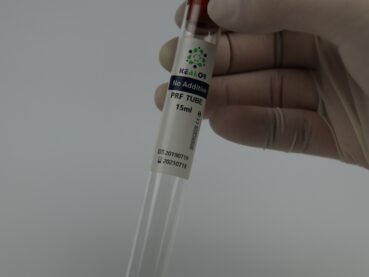How Does PRP For the Face Differ From Botox and Fillers
In the world of aesthetic treatments, Platelet-Rich Plasma (PRP) therapy, Botox, and dermal fillers are often mentioned in the same breath. Yet, they are distinct in their approach, application, and results. Let’s dive into the nuances that set these popular treatments apart.
Understanding PRP for Facial Rejuvenation
PRP stands out for its natural approach. It uses a concentration of platelets from your own blood to rejuvenate the skin. This ‘liquid gold’ is rich in growth factors that stimulate cell turnover, collagen production, and overall skin healing. PRP therapy, often termed as a ‘vampire facial’, is not just about looking younger; it’s about promoting healthier skin from within.
The Magic Behind PRP
The process begins with a simple blood draw. Your blood is then spun in a centrifuge to separate the platelets. This platelet-rich plasma is then re-injected into your facial skin. The idea is to harness your body’s healing capabilities to improve skin texture, tone, and elasticity.
Botox: The Wrinkle Relaxer
Botox, on the other hand, is a neurotoxin (Botulinum toxin) used to relax facial muscles. It’s a go-to solution for dynamic wrinkles – the ones that form from repeated facial expressions like frowning or smiling. Botox temporarily paralyzes these muscles, thereby smoothing out wrinkles and preventing the formation of new ones.
Quick and Targeted Results
The beauty of Botox lies in its precision and the speed of its results. Injections are localized to specific muscles, and the effects are visible within a few days. However, it’s a temporary fix with results lasting for about 3-6 months.
Dermal Fillers: Instant Volume Boosters
Dermal fillers are gel-like substances, often made from Hyaluronic Acid (HA), injected beneath the skin. They are the stars of instant gratification in aesthetic medicine, providing immediate volume and smoothing out wrinkles and folds.
Filling the Gaps
Fillers are versatile. They can plump thin lips, enhance shallow contours, soften facial creases, remove wrinkles, and improve the appearance of recessed scars. Unlike Botox, fillers don’t affect facial muscles but rather fill in and volumize the treated area.
PRP vs Botox vs Fillers: The Differences
- Nature of Treatment: PRP uses your blood; Botox uses a neurotoxin; fillers use biocompatible gels.
- Mechanism: PRP promotes healing and rejuvenation; Botox relaxes muscles; fillers add volume.
- Results: PRP offers gradual improvement in skin quality; Botox shows quicker wrinkle-relaxing results; fillers provide immediate volume and contouring.
- Duration: PRP effects can be long-lasting; Botox requires regular touch-ups; fillers vary based on the type used.
Who Should Choose What?
- PRP is ideal for those seeking holistic rejuvenation.
- Botox is best for targeting specific dynamic wrinkles.
- Fillers suit those needing immediate volume and contouring.
Conclusion: A Palette of Choices
In the realm of facial aesthetics, PRP, Botox, and fillers offer a spectrum of solutions. Whether it’s the natural enhancement of PRP, the precision of Botox, or the immediate results of fillers, each has its place in the art of facial rejuvenation. As always, consult with a qualified professional to determine which treatment aligns best with your aesthetic goals.
FAQs
- Q: Is PRP better than Botox?
- A: They serve different purposes. PRP rejuvenates, while Botox specifically targets wrinkles.
- Q: Can PRP and fillers be used together?
- A: Yes, they can be combined for comprehensive facial rejuvenation.
- Q: Is there any downtime with PRP?
- A: Minimal downtime is required, but some may experience temporary swelling or redness.
- Q: How long do fillers last?
- A: Most HA fillers last between 6 to 18 months.
- Q: Are these treatments painful?
- A: Discomfort varies, but topical anesthetics can be used to minimize pain.








